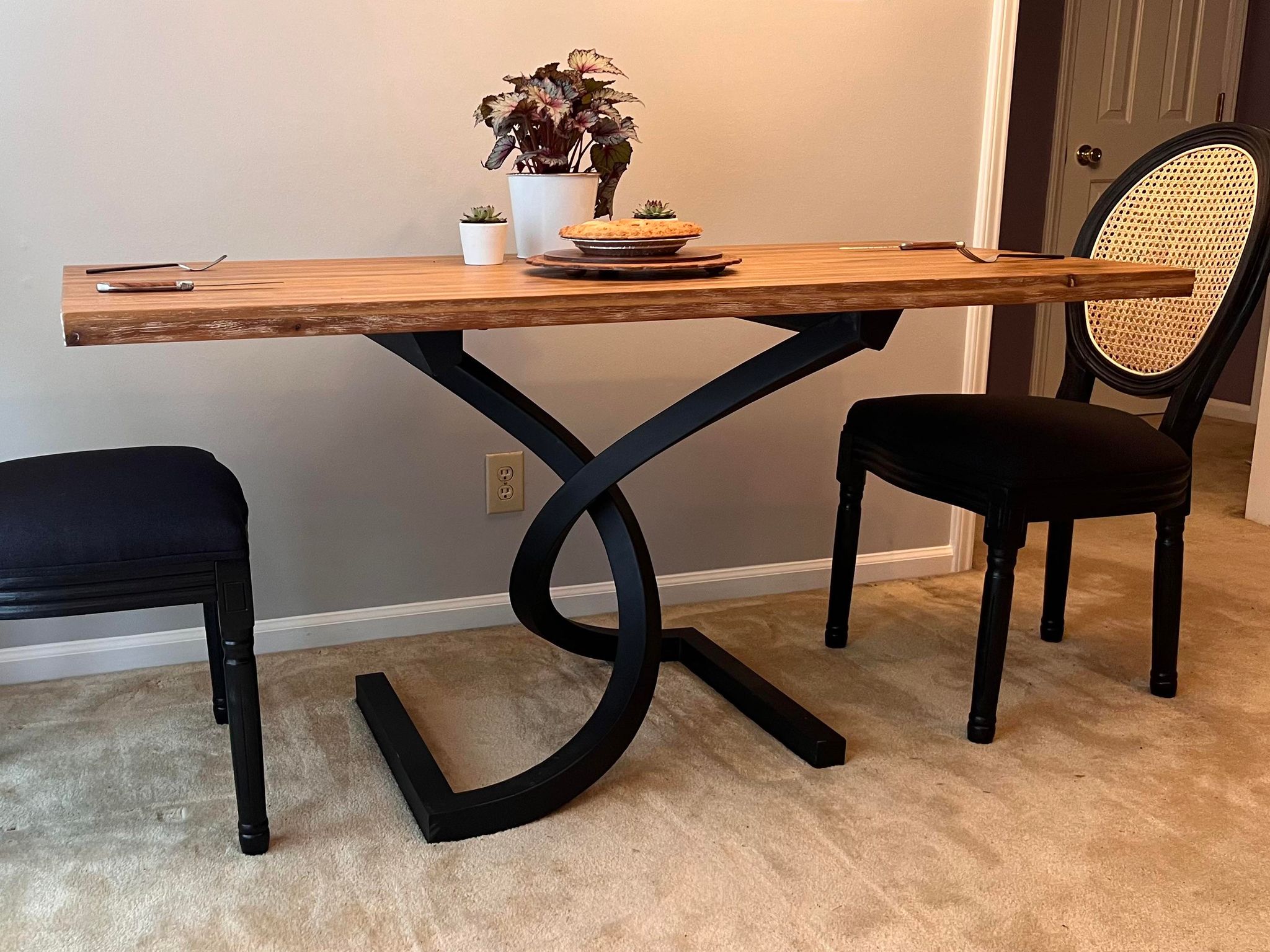Necessary Considerations for Selecting the Right Table Legs Wood
Choosing the proper timber for eating table legs entails a nuanced understanding of numerous elements that influence both performance and aesthetic appeal. The option of timber kind, varying from durable hardwoods to much more delicate softwoods, plays a crucial duty in ensuring durability and security. Each of these components can considerably affect the overall experience of your dining room.
Relevance of Wood Type

Hardwoods, such as walnut, maple, and oak, are frequently favored for their stamina and resistance to put on. These sorts of wood supply a durable structure that can hold up against day-to-day usage, making them optimal for dining tables that experience frequent gatherings. On the other hand, softer timbers like want may be a lot more at risk to damages and scratches, which might not be optimal for high-traffic areas.
Furthermore, the choice of timber can additionally affect the convenience of maintenance. Some woods need regular oiling or securing to protect their appearance, while others might be extra flexible. Eventually, selecting the ideal timber type entails balancing aesthetic factors to consider with functional demands, guaranteeing that the dining table legs not just look appealing yet likewise stand the test of time.
Analyzing Stability and Toughness
When examining table legs, one need to think about the stability and toughness they offer to the total framework. The legs are essential in supporting the table top and making sure the eating experience is risk-free and enjoyable. A secure table is vital for preventing tipping or tottering, which can result in spills or mishaps during meals.
The selection of wood type significantly affects toughness. Hardwoods such as walnut, maple, and oak are usually more durable and robust than softwoods like ache or fir. Additionally, the thickness and style of the legs play a crucial function; thicker legs or those with a conical layout can provide much better assistance and security.

Visual Considerations
While performance is extremely important, the visual charm of dining table legs can not be ignored, as they considerably affect the overall layout and setting of the dining area. The selection of coating, wood, and style can take away or improve from the table's visual influence.

Coatings also play a vital role in appearances. A natural finish can highlight the timber's inherent beauty, while repainted or discolored legs can introduce color and individuality right into the area. Moreover, the percentage and range of the legs family member to the tabletop and bordering furniture has to be considered to ensure aesthetic balance and communication.
Ultimately, the table legs should not just offer a functional purpose but additionally contribute to a natural and welcoming ambience, making them an essential factor to consider in the general layout of the eating location.
Maintenance Demands
To guarantee longevity and protect the charm of wood dining table legs, normal maintenance is necessary (Dining Table Legs Wood). Timber is an all-natural material that can be vulnerable to damage from moisture, heat, and put on. Establishing a routine care plan will substantially boost the longevity of your dining table legs.
Begin with normal dusting making use of a soft, lint-free towel to get rid of dust and debris that can scrape the surface. For more extensive cleaning, use a moderate soap option and damp cloth, preventing excess moisture that could permeate into the wood. It is a good idea to apply a high-quality wood polish or conditioner every couple of months to nourish the timber and preserve its appeal.
Attend to any type of scrapes or dents immediately with appropriate wood filler or touch-up pens to avoid additional wear and tear. By sticking to these maintenance needs, you will not just protect the visual charm of your wood dining table legs yet also prolong their functional life expectancy.
Budget and Expense Aspects
Budget and price factors regularly play a vital function in the decision-making procedure for selecting wooden table legs. When reviewing options, it is vital to develop a clear spending plan that straightens with your general furnishings financial investment. The expense of wooden eating table legs can vary significantly based on the type of wood, craftsmanship, and layout intricacy.
Woods such as oak, walnut, and cherry normally regulate greater costs due to their durability and visual allure. In comparison, softer woods like pine might be much more affordable however could not supply the exact same longevity. Furthermore, personalized or artisan-crafted legs can incur extra Full Report prices, reflecting the ability and time spent in their development.
It is likewise vital to think about the potential long-term worth of your investment. While choosing lower-cost materials might appear monetarily sensible at first, they may need even more frequent substitute or repair services, inevitably boosting general expense.
Consequently, stabilizing high quality and cost is important. Prioritize products that fulfill your visual preferences while guaranteeing they fit comfortably within your budget plan, permitting you to create a dining area that is both aesthetically attractive and practical.
Verdict
In conclusion, picking the proper timber for dining table legs demands careful consideration of various aspects, including wood type, stability, aesthetics, upkeep, and spending plan. Eventually, a well-informed decision will boost the longevity and visual appeal of the dining table, guaranteeing contentment and functionality for years to come.
Selecting the appropriate kind of wood for eating table legs is important for both visual allure and structural honesty. Ultimately, selecting the suitable timber kind entails balancing aesthetic considerations with sensible needs, making certain that the dining table legs not just look attractive yet additionally stand the test of time.
It is recommended to apply a top quality wood polish or conditioner every few months to nourish the wood and keep its luster.
The price of wood eating go to this site table legs can differ substantially based on the type of craftsmanship, timber, and layout intricacy.
In conclusion, selecting the proper wood for dining table legs demands mindful factor to consider of numerous factors, consisting of timber kind, security, aesthetic appeals, upkeep, and budget plan.